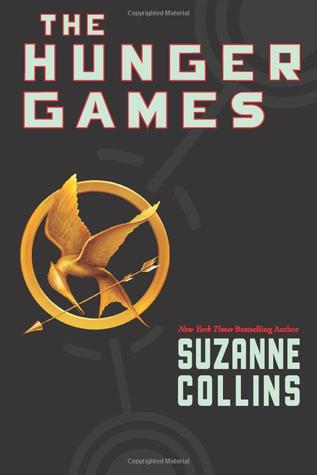
Greg Hickey is a writer, forensic scientist and endurance athlete. He is the author of the dystopian fiction novel Our Dried Voices and writer of the screenplay Vita. You can view more of his work on his website.
The Popularity of Dystopian Film and Its Effect on Dystopian Literature
By Greg Hickey
The past few years have seen a huge growth in dystopian films, from The Hunger Games franchise to an adaptation of Lois Lowry’s The Giver. In a March article for The Guardian, Joe Queenan went so far as to call it “a golden age,” while lamenting the fact that these films always portray “a grim, totalitarian nightmare.” So why this cinematic dystopian explosion, and why do we think the future will be so tragically depressing?
As far as I can tell, there is certainly a glut of dystopian films in the current marketplace. I also believe there is a glut of superhero films (do we really need Ant-Man?). I’m not sure we should take popular culture’s fascination with dark futuristic scenarios as evidence for a collective death wish any more than we should take the abundance of superhero films as evidence that the majority of society believes there are mutants among us with superhuman powers.
First and foremost, I believe dystopian fiction, whether literary or cinematic, serves as a form of social criticism. A critic does not necessarily believe society is utterly hopeless, merely that certain aspects of the social order warrant improvement. I doubt The Hunger Games author Suzanne Collins truly believes we are destined for a future in which we force our children to fight to the death; this plot was simply a convenient vehicle for her bigger message. (Perhaps superhero films likewise point to a desire for pure, honest heroes in a society of corrupt politicians, abusive celebrities and performance-enhancing athletes.)
 But why now? Is there something about our current society that is so demanding of such criticism in comparison to past eras? In the first place, we should distinguish between dystopian fictions targeted toward a younger audience and those targeted toward adults. YA dystopian fiction like The Hunger Games tends to focus on totalitarianism as a way to inspire younger readers to think critically and independently about the world and ideas in general. Such themes are especially relevant in today’s age of information overload. In contrast, while totalitarianism may have been a theme of earlier adult dystopian fiction such as George Orwell’s 1984, those stories were typically produced during the post-World War II/Cold War era when totalitarian states were far more prevalent than they are today. Much of contemporary adult dystopian fiction focuses more on environmental issues and the side effects of continued advances in technology (see Margaret Atwood’s MaddAddam trilogy as an example).
But why now? Is there something about our current society that is so demanding of such criticism in comparison to past eras? In the first place, we should distinguish between dystopian fictions targeted toward a younger audience and those targeted toward adults. YA dystopian fiction like The Hunger Games tends to focus on totalitarianism as a way to inspire younger readers to think critically and independently about the world and ideas in general. Such themes are especially relevant in today’s age of information overload. In contrast, while totalitarianism may have been a theme of earlier adult dystopian fiction such as George Orwell’s 1984, those stories were typically produced during the post-World War II/Cold War era when totalitarian states were far more prevalent than they are today. Much of contemporary adult dystopian fiction focuses more on environmental issues and the side effects of continued advances in technology (see Margaret Atwood’s MaddAddam trilogy as an example).
The film and book industry are also inextricably linked in this genre, since most dystopian films are adaptations of novels. I can’t think of a highly successful original dystopian film since The Matrix trilogy, released in 1999 through 2003. Entertainment on the big screen necessarily differs from entertainment on the page, with films relying more heavily on visual effects, elaborate costumes and breathtaking scenery. The Hunger Games looks impressive on film in part due to Collins’ creation of a nation divided into distinct groups, customs and physical appearances, and set against the backdrop of the technological wizardry of the capital city and The Hunger Games battlefields. In contrast, many 20th century dystopian novels describe simpler, starker worlds, and the film adaptations that exist, such as 1984 and A Clockwork Orange, don’t quite live up to the authors’ descriptions of those societies.
The result is a reciprocal effect in which the current success of dystopian films influences the growth and visual style of the corresponding literary genre, while the fact that modern film technology can faithfully depict increasingly elaborate futuristic worlds creates greater opportunities to adapt dystopian literature to cinema. 21st century problems might not actually be more calamitous or more deserving of criticism than those of previous eras, but greater technological advancements provide more opportunity for cinematic examination through parables of dystopian futures.
Ultimately, the short answer to Queenan’s question, “why is the [dystopian] future on film always so grim?” is the same reason horror films are scary and comedies are funny. Dystopia just is “a society characterized by human misery, as squalor, oppression, disease, and overcrowding” (Dictionary.com). Dystopian fiction magnifies these issues, which we observe on a limited scale in our own society. The answer to the more stimulating question of why we find miserable futures so compelling at this point in history is a combination of new social challenges such as the proliferation of information and the awareness of the environmental costs of human progress, along with advanced cinematic technology that allows for realistic depictions of the future on the big screen, in turn inspiring new authors to enter this genre.
One Comment